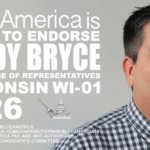As Medicaid Awareness Month draws to a close, health advocates are warning about a very big cliff as many as 15 million people could fall off in a few months. Those millions, including as many as 6 million children, got coverage on Medicaid during the COVID-19 public health emergency. In the early days of the pandemic, Congress passed a “continuous coverage” provision under the Families First Coronavirus Response Act, one of the first pandemic response bills. It prohibits states from kicking people off the program during the public health emergency.
The emergency was extended earlier this month and is now set to expire in mid-July. When it ends, Medicaid coverage won’t be the only thing that goes. Expanded SNAP (or food stamp) eligibility will end, too. There are plenty of other health-related programs that will go with it.
There are nearly 77 million non-elderly people who have health coverage through Medicaid, the federal/state partnership program to provide coverage to disabled Americans, and low-income Americans and their children. Something like 17 million people have enrolled during the COVID-19 pandemic, the result of job loss or long-term disability from the disease.
One of the real issues is for states, which have to determine Medicaid eligibility on a regular basis. States have been feeling their way through this, going extension to extension but dealing with a great deal of uncertainty because these extensions last just three months at a time, and because it looks like Congress isn’t going to do anything to respond with a permanent fix like the provision in the Build Back Better Act to ease the process for states.
There’s traditionally a lot of churn in Medicaid rolls, as people lose coverage because their income increases and they are no longer eligible, or they fail to provide the documentation required to continue their eligibility when they’re up for review. Because of the emergency, states haven’t been through this process in two years. It means that the data they have—people’s addresses, income, eligibility information—hasn’t been updated. So there are going to be added difficulties in the whole process. On top of that is the messiness of so many new enrollees from the COVID-19 crisis. Many of these people will be entirely new to the process of renewing their eligibility, and millions could end up being removed without even knowing it.
There are solutions other than just renewing the public health emergency every few months. The Center on Budget and Policy Priorities details how Congress could do that.
That includes federal legislation to close the Medicaid gap in the 12 states that refused to take the Affordable Care Act’s Medicaid expansion. The gap is those people who don't qualify for traditional Medicaid under those states’ rules because they make too much to qualify—in Texas, making $3,733 annually counts as too much—or age out of it, and don’t have enough income to purchase insurance through the ACA marketplace.
That leads to another thing Congress can do—make the temporary premium tax enhancements in the American Rescue Plan (ARP) permanent. They’re not going to expire in July, but at the end of the year, when people’s Obamacare health insurance premiums go up, with notices going out in October. Just before the election. And lower-income people who can’t get Medicaid won’t be able to afford these new private health insurance costs. The Urban Institute estimates that about a third of the people who are going to lose Medicaid eligibility when the public health emergency ends could qualify for premium tax credits, but won’t be able to afford it without the ARP enhancements.
Congress could also make sure that all children in the program have 12 months of continuous eligibility as well as require all states to provide 12 months of postpartum coverage. Those provisions were passed by the House in Build Back Better, and as CBBP says have proven to be important “mechanisms for keeping eligible children and postpartum people enrolled, reducing unnecessary and potentially harmful coverage gaps, and reducing paperwork burdens on both states and families.”
Protect Our Care has a new fact sheet, as part of its efforts for Medicaid Awareness Month, outlining just how critical Medicaid is for women. It’s done similar analyses for how Medicaid has reduced disparities for communities of color, people living with disabilities, rural Americans, women, children, and seniors and older Americans.
Medicaid covers 31% of adult women, which in 2020 was 16% of women under age 65, and is particularly helpful to people of color: about “33% of Black Americans, 30% of Hispanic or Latino individuals, nearly 15% of Asian and Pacific Islanders, and 34% of American Indian and Alaska Native individuals are enrolled in Medicaid, compared with 15% of white individuals.” It also covers more than 44% of women with mental and physical disabilities. The program is also the largest payer for reproductive health care, including birth control, cancer screenings, and maternity care.
There is just so much at stake, as always, with health care, and so many threats in yet another election year and one in which it’s entirely possible that Republicans regain at least one chamber of Congress. They’re already plotting against us, with the latest iteration of “repeal and replace,” the anti-Obamacare mantra of the last decade. That makes getting this done now all the more critical. Democrats should be focusing on these issues with as much focus and zeal as they have on Obamacare in the past.
Republished with permission from Daily Kos.


















